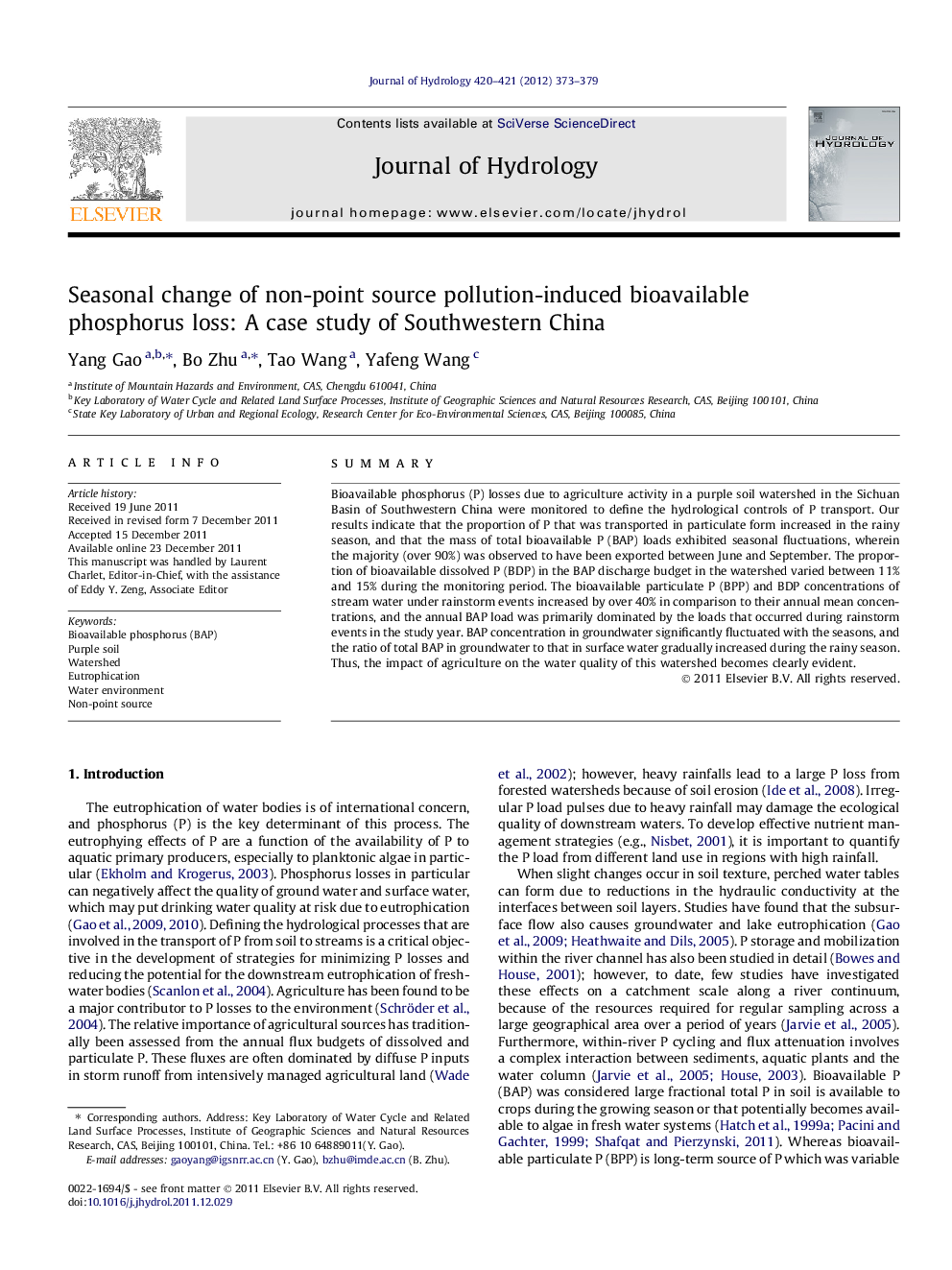| Article ID | Journal | Published Year | Pages | File Type |
|---|---|---|---|---|
| 4577180 | Journal of Hydrology | 2012 | 7 Pages |
SummaryBioavailable phosphorus (P) losses due to agriculture activity in a purple soil watershed in the Sichuan Basin of Southwestern China were monitored to define the hydrological controls of P transport. Our results indicate that the proportion of P that was transported in particulate form increased in the rainy season, and that the mass of total bioavailable P (BAP) loads exhibited seasonal fluctuations, wherein the majority (over 90%) was observed to have been exported between June and September. The proportion of bioavailable dissolved P (BDP) in the BAP discharge budget in the watershed varied between 11% and 15% during the monitoring period. The bioavailable particulate P (BPP) and BDP concentrations of stream water under rainstorm events increased by over 40% in comparison to their annual mean concentrations, and the annual BAP load was primarily dominated by the loads that occurred during rainstorm events in the study year. BAP concentration in groundwater significantly fluctuated with the seasons, and the ratio of total BAP in groundwater to that in surface water gradually increased during the rainy season. Thus, the impact of agriculture on the water quality of this watershed becomes clearly evident.
► Phosphorus (P) is the key determinant for eutrophication of water bodies. ► P losses in particular can negatively affect the quality of water environment. ► Defining the P hydrological and chemical processes from agriculture to streams. ► Developing strategies for reducing the potential for the downstream eutrophication.
